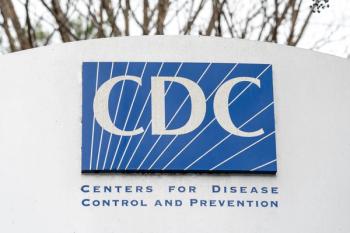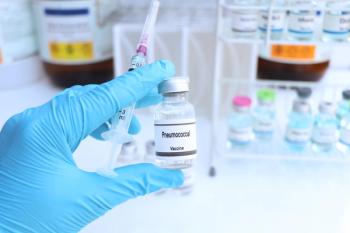
SDOH Crucial in Introducing Concept of Social Dermatology
Researchers conducted a narrative review to explore the possibility of integrating social perspectives and aspects into dermatological care and research.
Through facilitation of social determinants of health (SDOH), human functioning, and rehabilitation, researchers support introducing “social dermatology” within the skin-care space, according to a study published in Acta Dermato-Venereologica.1
“Increasing evidence supports the idea that SDOH, eg, educational attainment, employment, and community context, directly affect health status,” wrote authors of the study. “Researchers are also beginning to explore the impact of social factors on skin diseases, though no formalized research field, to the authors’ knowledge, provides a structured framework for such practice.”
It is well known that SDOH contribute to poorer health outcomes for patients most affected by them. In its explanation of SDOH and their impacts on patients, the US Office of Disease Prevention and Health Promotion provides the simple example of grocery store access.
READ MORE:
“People who don't have access to grocery stores with healthy foods are less likely to have good nutrition,” they wrote.2 “That raises their risk of health conditions like heart disease, diabetes, and obesity—and even lowers life expectancy relative to people who do have access to healthy foods.”
However, despite skin conditions impacting up to 1.8 billion people globally,3 evidence of SDOH and their impact on dermatology has been lacking.1 While “social dermatology” has been referred to in a minimal capacity prior to this study, researchers are aware and presented the possible dermatological outcomes spurring from SDOH.
Before delving into the role SDOH may play in the future of dermatological care, researchers explained how addressing social factors can lead to improved outcomes for patients with skin conditions. They mentioned how a deeper understanding of SDOH has the potential for decreasing flare-ups, reducing the need for dermatologist consultations, and avoiding unnecessary or unrealistic treatment options.1
“We wish to suggest the development of the research field ‘Social Dermatology,’” wrote authors of the study. “This article will therefore provide a narrative overview of the current research and relevance of SDOH and [the International Classification of Functioning] (ICF) in dermatology and suggest how to move forward with this new proposed research field.”
Before discussing the researchers’ explanation of SDOH in dermatology, it’s important to understand where the ICF falls into place. Developed in 2001 and officially accepted by World Health Organization members in 2021, the ICF is a framework designed for health care providers to communicate across nations and diseases, helping them better understand SDOH. Ultimately, the ICF is a resource for establishing between health and disability and how they are related with each other.1
In their search of SDOH and ICF in dermatology, and how they can inform the potential introduction of “social dermatology,” researchers perused PubMed research articles on skin diseases that included either the term “SDOH” or “ICF model.” Seeking a robust overview, the only inclusion criteria studies required was that all were written in English.
While mentions of SDOH in skin-related studies were prominent, use of the ICF in dermatological care was not.
“The use of ICF in dermatology is not a common practice,” continued the authors.1 “All studies regarded ICF as a valuable reference tool and reported intentions of creating ICF core sets in the future. To our knowledge, no ICF core sets exist for a dermatological population.”
However, when it comes to the role of SDOH, researchers uncovered significant relevance regarding its role in dermatology. Claiming that SDOH are relevant to the onset and outcomes of patients with skin conditions, researchers noted a specific example of how the need for social dermatology has evolved.
“The SDOH also has direct clinical importance that can be exemplified by the “RICHER” program (Responsive Intersectoral Child and Community Health Education and Research) from 2006, which addresses disparities in health care access of marginalized children, youth, and families,” they wrote.1 “In 2012, dermatology was integrated into the program due to high-frequency visits of patients with skin diseases. Reports from the program state that skin diseases are of great importance for these socially marginalized families.”
While SDOH vary significantly by region, they are of the utmost importance not only to dermatological outcomes but of all patients around the world. Despite significant development and understanding of the impact SDOH have on health care, researchers believe further systems need to be implemented to truly advance the role of SDOH in dermatology.
“In conclusion, we suggest the concept of ‘social dermatology,’ exemplified by SDOH, human functioning, and rehabilitation, be introduced to dermatology,” they concluded.1 “As seen in the field of social pediatrics, we suggest implementing a social theoretical incubator where tools, methodological guidance, implementation, and clinical examples can be shared.”
READ MORE:
Don’t get left behind: Sign up today for our
References
Christensen EMM, Jemec G, Saunte DML, et al. Introducing social dermatology. Acta Derm Venereol. 2025 Mar 3;105:adv42622. doi: 10.2340/actadv.v105.42622.
Social determinants of health. Office of Disease Prevention and Health Promotion. Accessed June 19, 2025.
https://odphp.health.gov/healthypeople/priority-areas/social-determinants-health WHO’s first global meeting on skin NTDs calls for greater efforts to address their burden. WHO. March 31, 2023. Accessed June 19, 2025.
https://www.who.int/news/item/31-03-2023-who-first-global-meeting-on-skin-ntds-calls-for-greater-efforts-to-address-their-burden
Newsletter
Pharmacy practice is always changing. Stay ahead of the curve with the Drug Topics newsletter and get the latest drug information, industry trends, and patient care tips.






































































































































